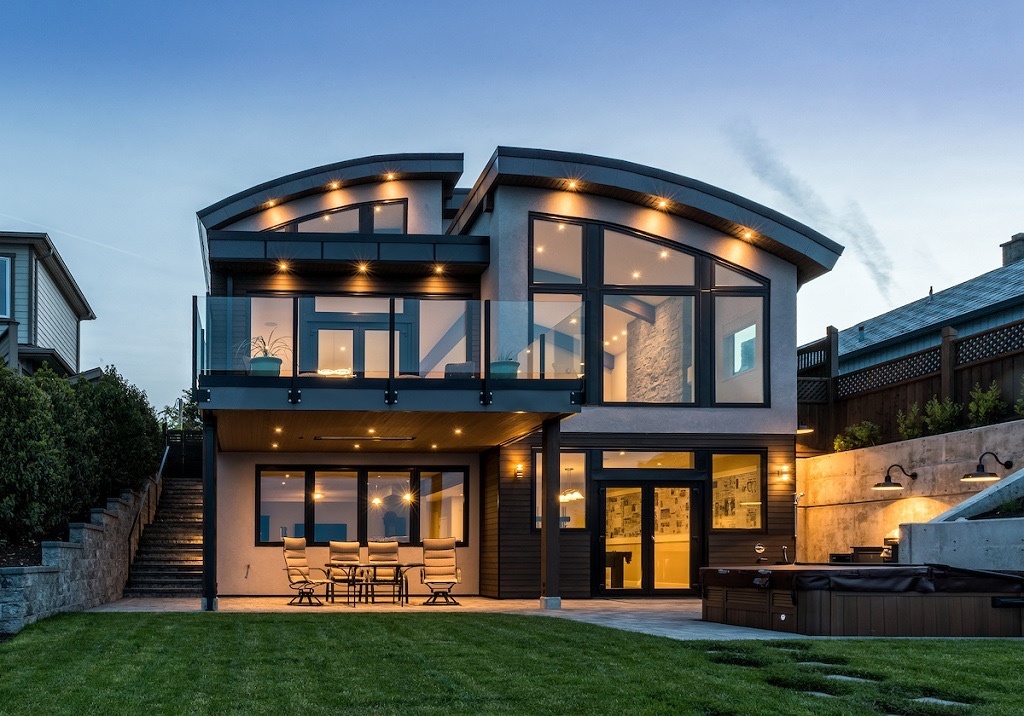There was once a time, it is said, when humans lived without the need for generated power. But that time was long, long ago and far, far away. Oops, sorry; that was another story.
Today, we don’t know anyone who doesn’t want to control interior temperatures when it’s stifling hot or downright cold outside. There’s no one on our block who is satisfied with uncooked food or meat roasted on an open fire all the time. And, as careful as most of us are about not wasting electricity and trying to conserve resources, it’s all too easy to flip the light switch almost automatically when entering a room.
So what’s all the talk about “net zero energy home design?”

Green Principles
While living “off-grid” was an attractive option for some people, it never became mainstream because it entailed both too much work and too much “giving up” for most of us. Today, however, home building technology has caught up to green principles, and it is no longer necessary to do without niceties and lifestyle advantages of modern living in order to embrace sustainability and energy-efficiency.
In fact, just the opposite is true. What has become increasingly evident is that new developments, including lighting improvements that include LED bulbs and smart home technology, offer modern homeowners greater options for comfort, cost-savings, quality, health and environmental friendliness. Working to reduce reliance on fossil fuels, lower carbon emissions and consume less total energy has been brought home, literally, in a big way.
Since the genesis of the green building movement in the 1960s and 70s, and the founding of the U.S. Green Building Council (GBC) in 1993, the direction of programs like Energy Star and LEED certification increased energy efficiency and lowered operational costs. Now, with widespread availability of home solar panels and a push for renewable energy (including solar, wind and hydroelectric), a newer and far more comprehensive goal is to substantially reduce total energy consumption in the coming decade.
It has been demonstrated to work. Interestingly, the focus of the international GBC for the coming decade, is on “healthier” homes and commercial buildings, rather than on more efficient ones.
The Net Zero House
While most homeowners can’t boast a zero monthly electrical bill, it is no longer an anomaly for an owner to receive a credit from a local power company for “excess energy” generated by rooftop solar panels. Not all companies offer it, but enough do to lend credence to the performance value of residential solar arrays.
The next frontier is to reduce home electrical consumption to the point that personally-generated electricity is sufficient to power a home’s needs. Throughout the United States and Canada, and across the globe, home builders and developers see Net Zero homes as not only greener, but also better built, more comfortable and more durable, no matter what their style or location. In addition to being energy efficient, they are better insulated, quieter, free from toxic materials and allergens, have better-performing roofs, more efficient windows, more thoughtful and location-appropriate design, and sensible electrical and lighting plans.
Atterra Designs integrates lighting design with architecture, space planning, room function, natural daylighting and personal preferences. Our designers are fully aware of the ways efficient electrical planning and lighting options can affect energy use.
We commend designers and builders who are committed to the principles of reduced power consumption and energy efficient home design.
If you would like more information about the ways in which you can “power up” your savings potential and “generate” additional efficiency as you lighten and brighten your new home, just say the word.
The potential exists on our planet, right in this galaxy, right now; if your goal is to reach zero, Aterra will help you get started!


